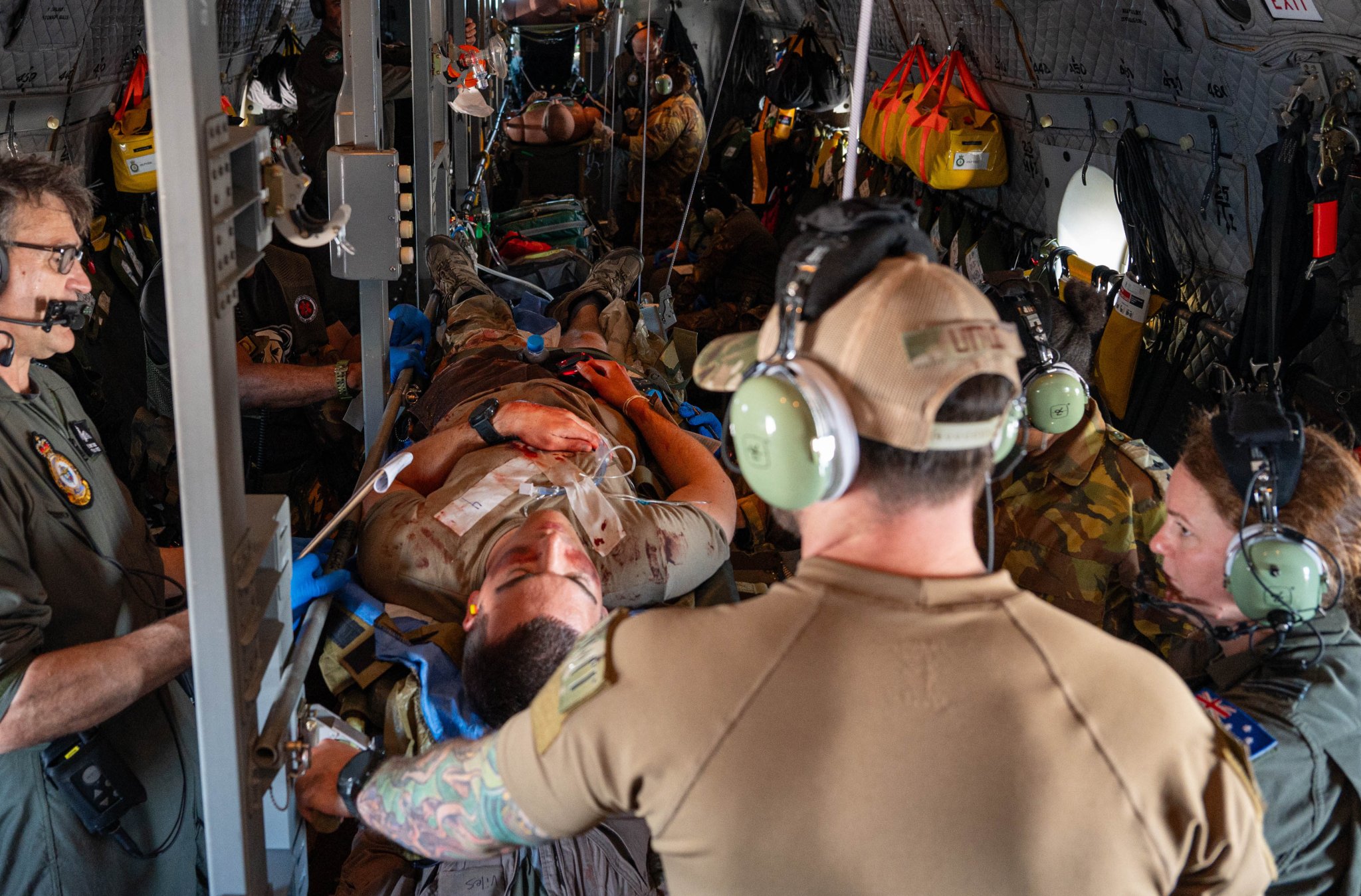

U.S Air Force pararescuemen and HC-130 rescue aircrews led a mass casualty exercise on the remote Pacific island nation of Papua New Guinea in late August.
As part of Pacific Angel 24-1, over 100 search and rescue personnel from the U.S., Australia, France trained together on Papua New Guinea, along with that island nation’s defense forces. The final field event included the pararescuemen, or PJs, and non-U.S. partners assessing and collecting multiple patients from a simulated mass casaulty event and handing them off to evacuation aircrews from different countries.
The goal, said Air Force officials, was to get militaries that all operate in the Pacific region working together.
“Like that old saying goes, you don’t want to be exchanging business cards when disaster strikes,” said Col. Todd Larson, Pacific Air Forces director of strategy and plans. “So these connections are great and should stand the test of time.”
With conflict with China on the minds of officials at the Pentagon, the exercise is one of a growing number that in which U.S. military personnel trains with counterparts from Pacific nations and western allies. Among challenges int he Pacific could be the task of evacuating casualties in an area without air superiority and across long distances. As a result, the U.S. has been turning to partners in the region for more training, incorporated operations.
Subscribe to Task & Purpose today. Get the latest military news and culture in your inbox daily.
Pacific Angel 24–1 included more than 60 U.S. Air Force, 18 Royal Australian air force, nine French navy and 45 Papua New Guinea Defence Force personnel, two HC-130J Combat King IIs from the 39th Rescue Squadron, one Royal Australian Air Force C-27J Sentry, one French navy Dassault Falcon 20G and one Papua New Guinea Defence Force PAC-750.

Each aircraft, officials said, load patients in different configurations, which troops had to learn and perform for the final event.
The exercise included classes on mass casualty procedures, evacuation operations and search and rescue skills including adverse terrain survival and swift water rescue. The exercise also included training in mass casualty triage, evacuation, infectious disease control and airfield operations.
On the final day, teams from all four nations ran through a mass casualty exercise with live and simulated patients.
It was the first time Papua New Guinea search and rescue troops had worked with U.S. aircraft.
“We threw a lot at the [Papua New Guinea] personnel,” said U.S. Air Force Capt. Samantha Rose, 18th Aeromedical Evacuation Squadron flight nurse.
The latest on Task & Purpose
- Hawaii soldier earns rare triple tab: Ranger, Sapper, Jungle
- ‘I want to be an infantryman,’ says man who joined the Army at 39
- New Tinker Air Force Base motto immediately lampooned by airmen, veterans
- Army Chinook takes flight with ‘FUKIRAN’ call sign
- Navy fires captain of USS John S. McCain for “loss of confidence”
